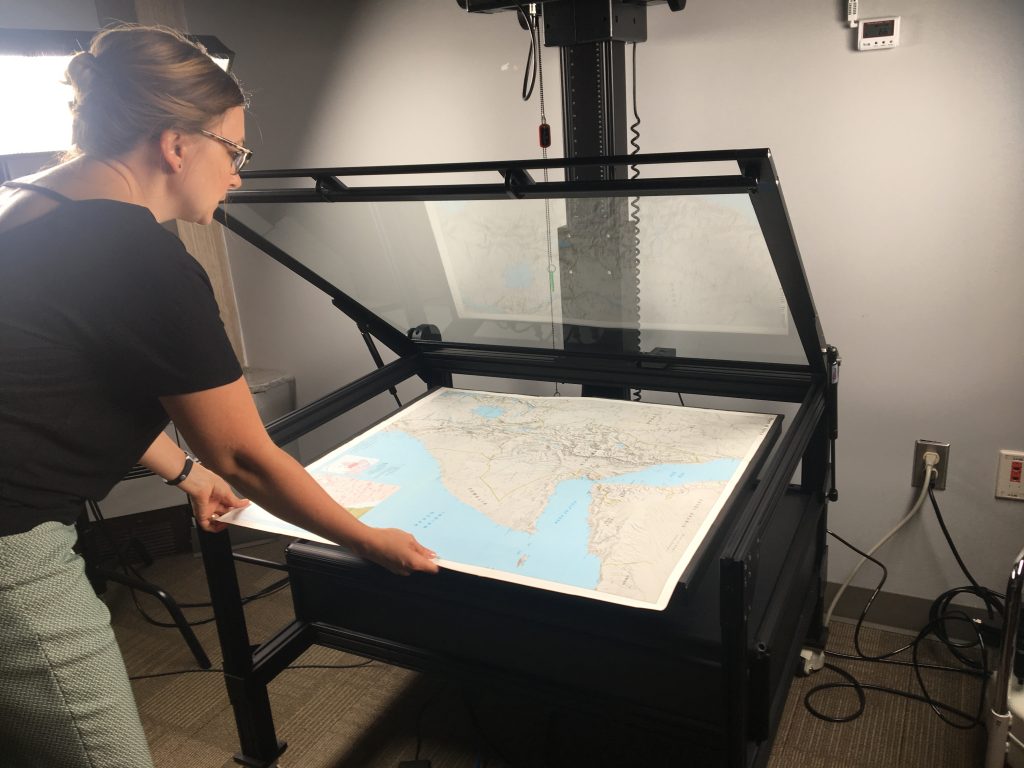June 7, 2018
By Lauren Scheffey ’20
Today we met Kimberly Wolfe in the Digital Scholarship Lab in the library to learn how to convert physical maps to a digital form. We used the university’s high-tech, super-expensive camera and a program Kimberly called “photoshop on steroids” to take a photo of the map and adjust the focus, exposure, white balance, and alignment. Our end result was a high resolution.jpg nearly identical to the physical map, and ready to be imported to ArcMap and georeferenced. The National Lands Commission has already scanned the maps of the settlements, so we will not be involved in that aspect, rather we will be cataloging, georeferencing, and digitizing the scanned maps. However, seeing how to scan maps and convert them to digital forms helps us understand the process from start to finish, rather than simply the components we will be working on directly.
We been dividing our time between technical, GIS-related prep/training and ensuring we’re prepared with things such as medications, clothing, and TSA-approval, plastic-free travel bags. Yesterday Taylor showed some of the data he has been downloading from OpenStreetMap that will be useful to us when we are digitizing the polygons of the settlements. We created a template map documents including roads, waterways, and counties in Kenya, as well as a 50k and 10k grid. Each settlement map has an index number, which we will use to locate the settlement within our grid system. Once we have the location, we will be able to see the roads/waterways that constitute the settlement’s borders and use the corresponding features of those roads/waterways from the OpenStreetMap data to digitize a polygon of the settlement.
We have also been reading books and articles about Kenyan culture and corporate etiquette and practicing some simple Swahili phrases, such as “habari” meaning “hello,” and “asante” meaning “thank you.” We are trying to read some of the most popular/important books in Kenya culture, and I am currently reading “Wrestling with the Devil,” Ngũgĩ wa Thiong’o’s memoir recounting the time he spent imprisoned by the Kenyatta regime. From 1977-1978, Ngũgĩ wa Thiong’o was detained in Kamiti Maximum Security Prison, under 24-hour surveillance. It is here in prison, however, that he writes his most famous novel, “Devil on a Cross,” on prison-issued toilet paper.
While it is impossible to learn everything about a culture in just two weeks, it has been fun for us to immerse ourselves in Kenyan history, language, politics, and customs as we try to learn as much as we can in preparation for our trip. We are finishing up our training and some last-minute packing and are excited to be in Nairobi soon and start working at the NLC!
